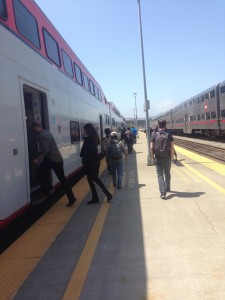Almost two decades ago, Congress decided $200 million should be the most a passenger train company like Amtrak should be required to pay to injury victims. Sounds like a lot of money, but let’s look at that for just a moment.
Passenger trains can hold hundreds of people and train wrecks can cause an array of injuries from broken bones to death. Without knowing how many people would be injured or what type of injuries they sustained, Congress set a limit on how much money, as a group, they could recover. Congress set a limit without knowing how many people would be killed and what those lives lost meant to their families. For example, was the person who was killed the sole breadwinner for a family consisting of three very young children? But it gets worse.
The $200 million limit does not have any provision for incremental increases to account for cost of living increases, etc. In the wake of the most recent Amtrak crash, many experts are saying the $200 million dollar cap may not be enough to cover the losses associated with the eight deaths and dozens of injuries in the Amtrak 188 crash in Philadelphia. To be sure the cost of medical care and most other things have gone up in nearly 20 years, but the limit has not. The current law does not have a sunset provision in which the limit expires if it is not purposefully reviewed to determine if should continue, be enlarged, etc.
Five years ago, Democrats attempted to raise the cap to $500 million following a train crash in California, but the legislation failed. Another bill is currently being introduced to raise the limits and make them retroactive to the May, 12, 2015 Amtrak crash. And while I am against any type of cap, for reasons I will discuss in a moment, at least this bill empowers the Secretary of Transportation to change the limit if it is determined that additional financial responsibility is necessary. We will have to wait and see if this bill gains any traction.
Back to why I am against caps of any type. Setting a predetermined value on something you know nothing about is generally a bad idea. You would not agree to buy a car without knowing the make, model, mileage and general condition of it. So, why would we set a limit on how much a group of people can recover without knowing how many people are hurt, how badly they are hurt, how many people are killed, etc.?
While vesting some discretion to enlarge the cap in the Secretary of Transportation is better than nothing, why vest this discretion in one individual who is subject to political pressure and whims? Would it not be wiser to let 12 people on a jury, who have heard all of the evidence, and who are not political appointees, decide what is the proper amount of compensation? Oh, and by the way, to the extent that either side thinks those 12 people’s decision is wrong, we allow for them to seek an override from the trial judge, an automatic appeal to the appellate court and then a discretionary appeal after that.
Why do we choose to protect corporate America over the individuals who were injured by corporate America? Why would we allow injury victims to be harmed again by failing to compensate them appropriately for their losses? Losses they played absolutely no role in bringing about.
And one final point: there is a deterrent factor involved here. If you have to pay for the broken window, you are going to be more careful about where you play catch. If companies are not legislatively insulted from their bad decisions, maybe they would not make so many of them.
If you or a loved one has been in injured in a train accident or an accident of any kind and would like to discuss your case with one of our top-rated attorneys, please give us a call at 615-742-4880 (Nashville) or 615-867-9900 (Murfreesboro) or 866-812-8787 (toll-free). We handle all accident cases on a contingency basis.
 Tennessee Injury Law Center
Tennessee Injury Law Center


